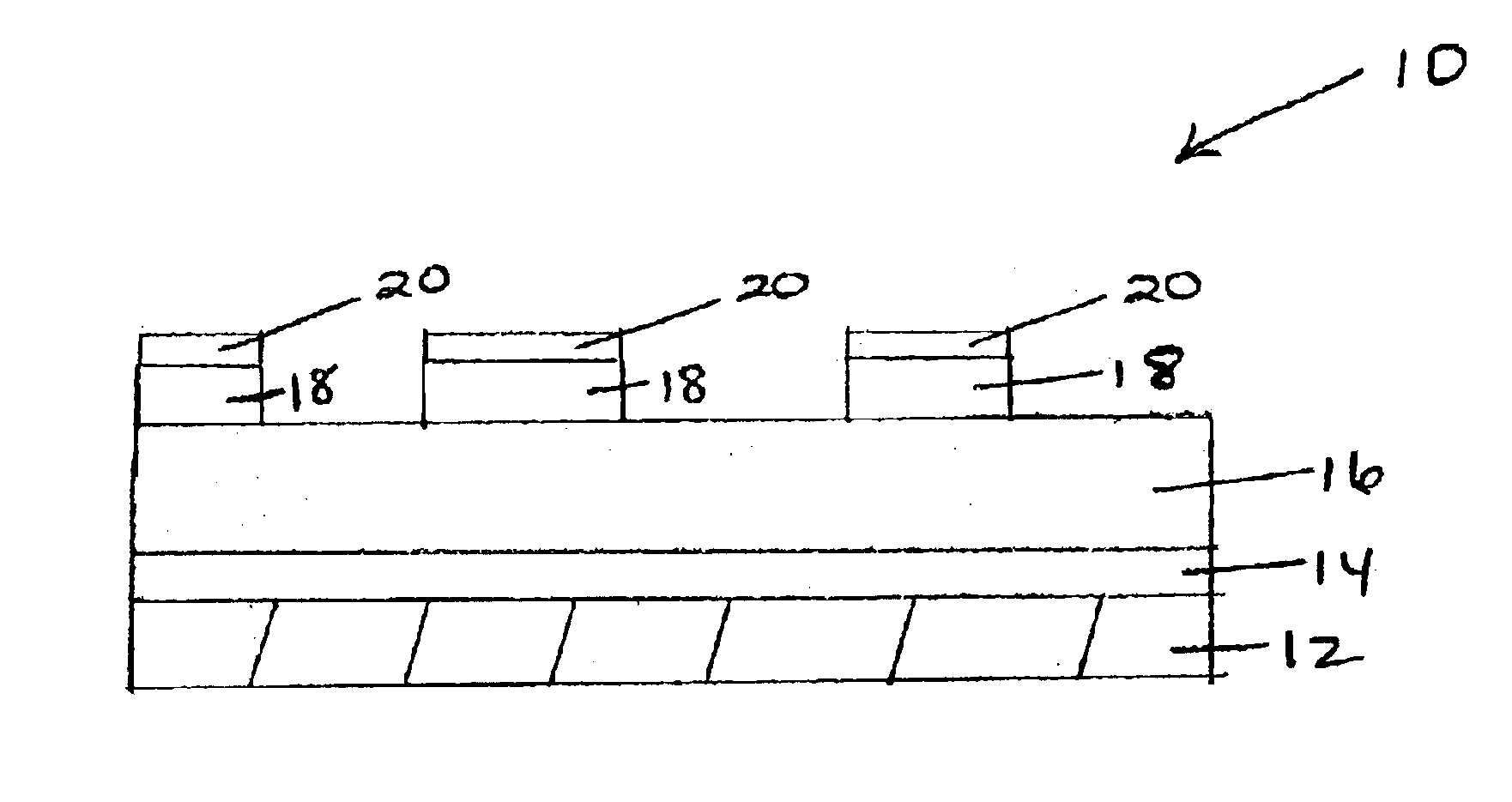Laser ablation method for patterning a thin film layer
a thin film layer and laser ablation technology, applied in the direction of identification means, instruments, manufacturing tools, etc., can solve the problems of increasing power consumption, reducing display reliability, and not achieving the phosphor luminescence and colour needed to be fully competitiv
- Summary
- Abstract
- Description
- Claims
- Application Information
AI Technical Summary
Benefits of technology
Problems solved by technology
Method used
Image
Examples
example 1
A thick film electroluminescent display was made as described above, wherein the europium activated magnesium barium thioaluminate phosphor film layer is about 270 nanometers thick and the underlying layer of barium titanate is about 15 nanometers thick. To the top of the phosphor film layer was sputtered a protective layer of alumina, which is about 45 nanometers thick, followed by a layer of indium tin oxide, which is about 100 nanometers thick. The indium tin oxide acts as both an electrode and protective layer for the display.
The phosphor film layer together with the overlying layers were ablated using an excimer laser having a laser wavelength of 248 nanometers, a laser energy density of 1.5 joules per square centimeter and a laser pulse repetition rate to give a pulse every 26 micrometers along the ablation path.
This resulted in a phosphor film layer that could be independently illuminated by applying a voltage between the gold electrode and the indium tin oxide layer. The lum...
example 2
A display similar to that of Example 1 was fabricated, except that the laser energy density was higher at 2 joules per square centimeter and the laser pulse repetition rate was lower so that there was a pulse applied every 52 micrometers along the ablation trench.
This display performed similarly to that of Example 1.
PUM
| Property | Measurement | Unit |
|---|---|---|
| Time | aaaaa | aaaaa |
| Time | aaaaa | aaaaa |
| Thickness | aaaaa | aaaaa |
Abstract
Description
Claims
Application Information
 Login to View More
Login to View More - R&D
- Intellectual Property
- Life Sciences
- Materials
- Tech Scout
- Unparalleled Data Quality
- Higher Quality Content
- 60% Fewer Hallucinations
Browse by: Latest US Patents, China's latest patents, Technical Efficacy Thesaurus, Application Domain, Technology Topic, Popular Technical Reports.
© 2025 PatSnap. All rights reserved.Legal|Privacy policy|Modern Slavery Act Transparency Statement|Sitemap|About US| Contact US: help@patsnap.com


